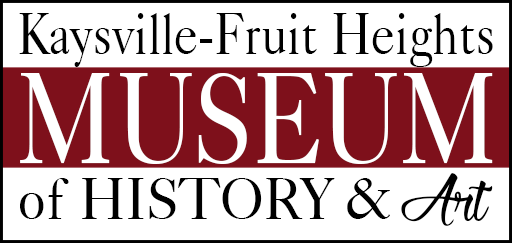1976 Exhibit Brochure
In 1866 Chief Washakie and 1,000 Shoshone Indians visited the small settlement of Huntsville. Washakie and his sub chiefs attended church services, and performed ceremonial dances on the town square the following day. After the dancing the settlers gave presents to the Indians.
2023 Exhibit Guide
Chief Washakie (1804-1900) was a prominent Shoshone leader and was among the most famous Native American leaders. He was known to be a powerful warrior and statesperson, and played a significant role in the development of the western United States territory by forming strong relationships with mountain men, government officials, and religious leaders.
In 1866, Chief Washakie and a band of 1,000 Shoshone Indians visited the small settlement of Huntsville. Washakie and his sub chiefs attended church services with the settlers, and, the following day, the settlers gave gifts to the Indians after they performed ceremonial dances on the town square.
Kaysville Area Connection
A band of northwestern Shoshone led by Chief Sagwitch settled on a farm community on the Utah-Idaho border. Their town was named Washakie after the great Shoshone chief who was so friendly to the Mormons. The peaceful interactions between Sagwitch’s band and Kaysville settlers were established on July 31, 1847, when Shoshone tribal leaders, including Chief Sagwitch, met with Mormon Church leader Brigham Young in Salt Lake City to establish their territorial claims.
In addition to farming, the people of Washakie made of brain-tanned leather finely crafted beaded buckskin moccasins, gloves, and jackets. The Hyde family interacted with the band as they traveled through Kaysville, a continuation of an old tradition, and took their hunting skins to Washakie Farm to be prepared and decorated in the way the tribe’s women “express themselves in art1”.
Artist
Franz Johansen (1928-2018)
Franz Johansen was inspired to become an artist while serving an LDS mission. Hechose to spend the rest of his life portraying his religious beliefs through visual art. After his mission he served briefly in the U.S. Army and studied at Brigham Young University graduating with a Masters of Fine Arts.
Johansen taught at Brigham Young University for over 30 years, and was the department chair for several years before retiring in 1989 to pursue art full-time. Johansen is best known for his sculptures and has been named the founder of the LDS contemporary fine art movement. He was the chairman of the Institute of Fine Art in Utah and many of his works have been displayed in the Church History Museum in Salt Lake City.
Sources
- “Bicentennial Historical Art Collection.” 1976 Exhibition Brochure, Special Collections, Weber State University.
- Eyes Toward the Past. DVD.
- Karras, Marilyn. “Settlers, Indians Felt Mutual Respect”. The Ogden Standard Examiner, 31 Oct. 1976, Sun., page 22.
- Parry, Darren. The Bear River Massacre: A Shoshone History, Comment Consent Press: Salt Lake City, 2019.
Citations
- Hyde, Mae citing Noal Hyde first-hand accounts. Handwritten label ca. 1950. Email. 2 March 2021, 19 Oct. 2021.
Notes
Image shows damage to the painting done at an unknown point.
Copyright owned by Weber State University Storytelling Festival. All rights reserved. Painting shown by Kaysville – Fruit Heights Museum with permission. Painting number five in the 2023 exhibit guide.


